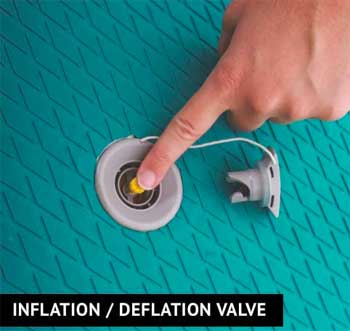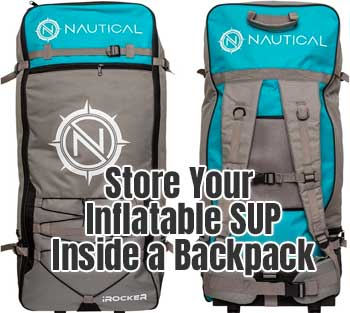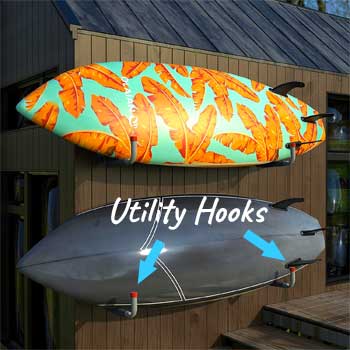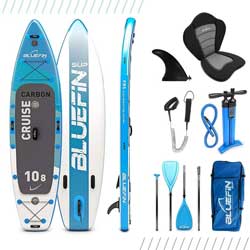When you’re not using your stand up paddleboard, what’s the best way to store it? Whether you only use your board seasonally or want to keep it out of the way when not in use, we’ve got some great tips on how to store an inflatable sup.
1. Easy Tips to Clean Your SUP:
First of all, you can extend the life of your paddleboard by taking care of the PVC shell. In other words, keep it clean, dry and out of direct sun. It can also help to not keep it in extreme temperatures (hot or cold) for long periods of time.
I like to rinse off my SUP after each use. Sometimes I let it air dry, while other times I will dry it with a soft microfiber cloth if it got lots of dirt, sand or debris on it. And it’s you’re storing it for a long period of time, make sure you allow the board to completely dry first.
2. How to Deflate an Inflatable SUP:
Second, you can completely deflate your SUP, let some of the air out or store it fully inflated. Of course, full deflation allows you to save space, roll up the board and stick it a storage bag or backpack.
Rotate and remove the lid of the inflation valve and then depress the button in the center of the valve. This will let air out of the board and start the deflation.
I typically let the SUP deflate for a few minutes, and then you can use the inflation pump to also remove the rest of the air from the board.
3. How to Store an Inflatable Paddle Board (2 Ways)
Once your inflatable SUP is completely deflated, now you can roll it up. Start at the nose of the board and roll it towards the tail. The tighter and straighter you roll it, the more compact it will be fore storage.
When it’s fully rolled up, tie straps or bungee cords around it (usually included in the package). By the way, avoid over-tightening the straps, as this can damage the board.
Note: if you need to store your SUP in a location that can reach freezing temperatures, it’s a good idea to wrap it in a blanket or other protective layer for extra insulation. Extreme cold temps may cause the PVC to crack over time.
Alternatively, you can sometimes store inflatable SUPs fully inflated. This option saves you time because you don’t have to continually inflate and deflate your board. However, you’ll need more space to store a large paddleboard in an area that doesn’t get extremely hot or cold.
I keep my inflatable paddleboards inflated year round in my garage, since I have the space. Plus, the area is somewhat temperature controlled.
To hang my SUPs off the floor and out of the way, I use basic 12″ utility hooks. They are strong, easy to hang and wide enough to accommodate paddleboards (and some kayaks too).
Not to mention, these wall hooks don’t cost a lot. plus, you only need 2 hooks for each SUP, so a pack of 4 can hold 2 boards.
Note: One big advantage that inflatables have over hard boards is that they don’t ding or crack if you happen to bump into them or drop them. That said, proper care will keep your SUP in better shape for longer – and it doesn’t require lots of effort.





